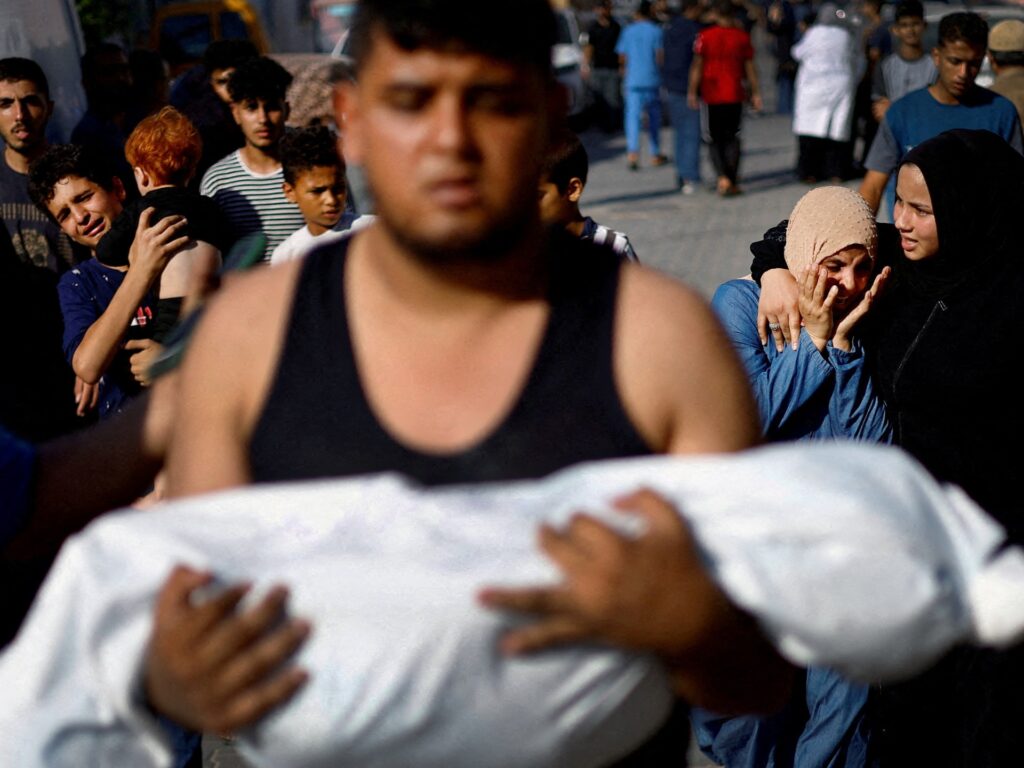A woman holds a child in her arms, delicately balanced on her knees. It’s an image that resonates, as old as human history.
But in a dark inversion of the familiar, we see that the child she holds close is a corpse wrapped in a shroud. It’s a quiet moment of intense grief. The woman wears a scarf, her head bowed, her face convulsed with grief. It is unclear whether the child she is mourning is a boy or a girl.
This child is one of many who have lost their lives on both sides of the war between Israel and Hamas. Most bear names we will never know, whose deaths will trigger a lifetime of grief for family members we will never meet.
In the 21st century, an average of nearly 20 children are killed or maimed every day in wars around the world, according to UNICEF.
On October 17, Reuters photographer Mohammad Salem was in Khan Younis, in the southern Gaza Strip, at the Nasser Hospital morgue, where residents went to search for missing relatives.
He saw the woman crouching on the floor of the morgue, sobbing and clutching the child’s body tightly.
“It was a powerful and sad moment, and I felt the image encapsulated the broader meaning of what was happening in the Gaza Strip,” he said. “People were confused, running from one place to another, eager to know the fate of their loved ones, and this woman caught my attention as she held the little girl’s body and refused to let go.”
This moment was particularly poignant for Mohammad, whose wife had given birth a few days earlier.
In Gaza, where communications were cut, finding people proved fraught with difficulties. But two weeks after the photo was taken, Reuters was able to track down the woman in the photo and interview her at her home in Khan Younis.
She is Inas Abu Maamar, 36, and the body she was holding in the photo was that of her 5-year-old niece, Saly.
Inas had rushed to her uncle’s house when she learned she had been hit, then to the morgue.
“I lost consciousness when I saw the girl. I picked her up,” she said. “The doctor asked me to let go of her… but I told them to leave her with me.”
Saly’s mother and sister were also killed, as well as Inas’ uncle and aunt. Saly was one of Inas’ favorites – she used to stop by her grandmother’s house on the way to kindergarten and ask her aunt to take a photo of her.
“Most of the videos and photos on my mobile are of her,” Inès said.
Saly’s 4-year-old brother Ahmed was outside the house when she was hit and survived. He now lives with Inas. He rarely speaks, except to ask where Saly is.

